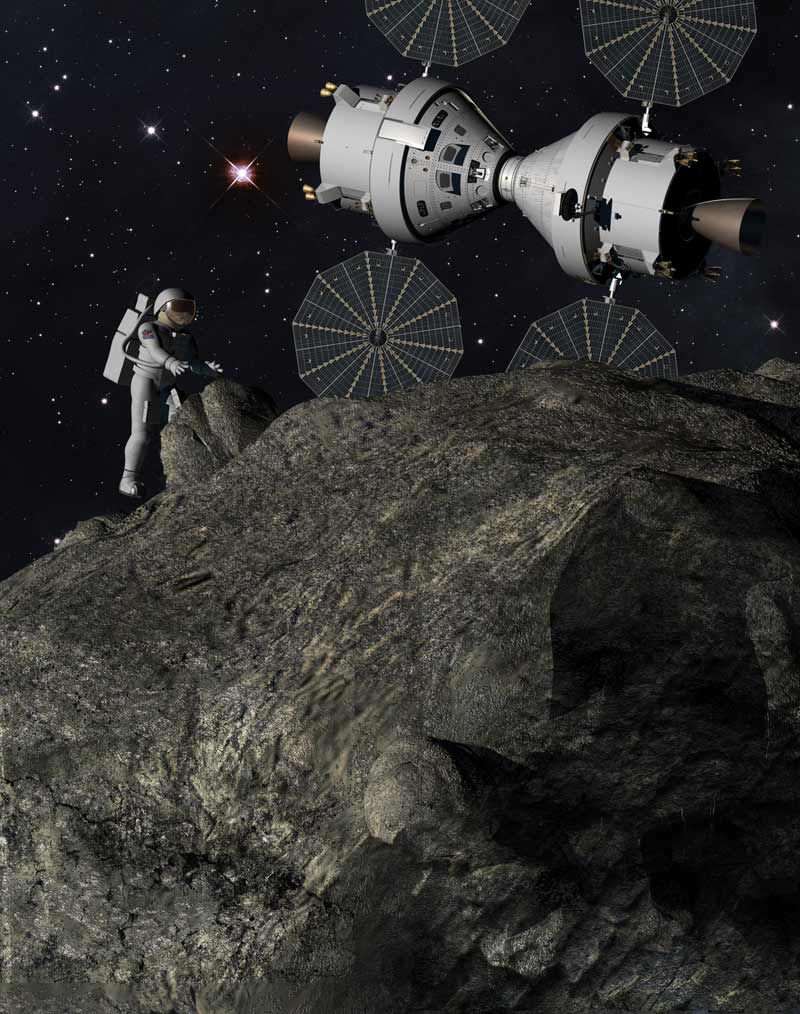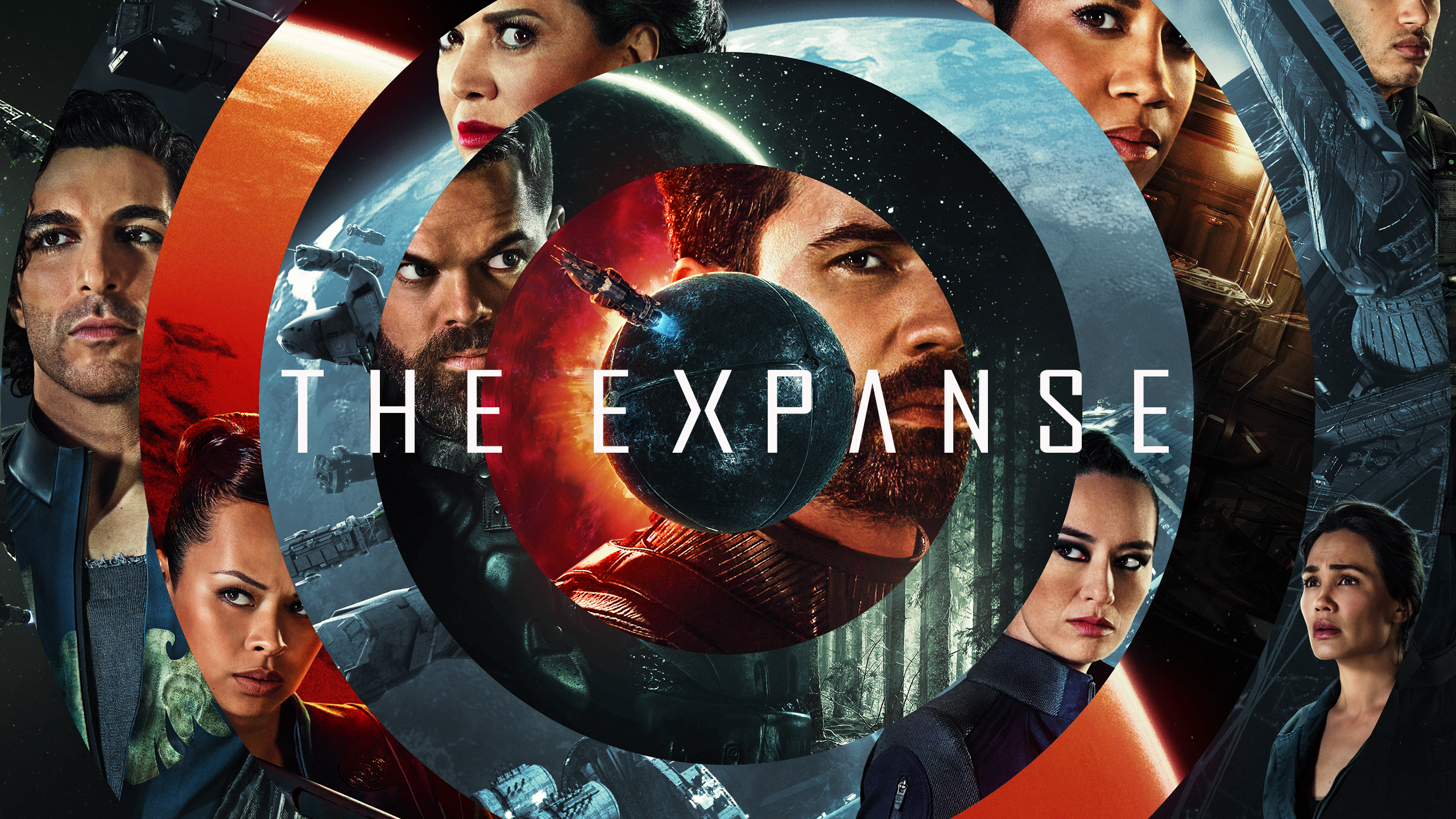'Plymouth Rock' Deep Space Asteroid Mission Idea Gains Ground

Plans for sending humans to visit an asteroid are heating up, with at least one company already scoping out the technological essentials for a deep space expedition within a decade, given the go-ahead.
The asteroid space trek is seen as both scientifically valuable and as a dress rehearsal for a Mars mission, NASA officials have said. It could also hone ideas for planetary defense to guard Earth from a messy head-on clash with a space rock.
Launching a manned asteroid mission by 2025 is NASA's new goal set by President Barack Obama, who announced the plan in April. The deep space mission would serve as a stepping stone to a crewed mission to Mars in the mid-2030s, he said.
Lockheed Martin, which has been building NASA's Orion space capsule to replace the agency's retiring shuttle fleet, has already completed a study on how an asteroid mission might work.
Asteroid questions loom
Determining how best to dispatch a crew to an asteroid is now high on NASA?s to-do list. The agency held a two-day workshop in Washington, D.C., this month to discuss ways to explore NEOs with robots and astronauts.
The workshop's primary goals were ?to increase the collective understanding of NEOs, communicate NASA?s plans for a human mission to a NEO in the 2024-2026 timeframe, and receive community input on mission objectives,? said Douglas Cooke, NASA?s associate administrator for exploration systems.
Breaking space news, the latest updates on rocket launches, skywatching events and more!
Determining what technologies and other information will be required before even attempting an asteroid-bound mission with astronauts, or setting planetary defense plans in case of potential impacts, is vital.
NASA plans to retire its three remaining space shuttles next year and rely on Russian, Japanese and European spacecraft to send cargo and crews to the International Space Station until U.S.-built commercial spaceships are available.
Meanwhile, NASA is continuing work on the crew-carrying Orion space capsule originally developed for the agency's moon-oriented Constellation program, which Obama canceled as part of the new space plan.
Orion Deep Space Vehicle
Even before NASA's new plan was announced, Lockheed Martin had studied ways to turn the baseline capsule into an Orion Deep Space Vehicle for more ambitious spaceflights.
The Orion project has had its share of worry.? Obama originally scrapped the spacecraft along with the rest of NASA's Constellation program in February, then reinstated it as an emergency escape ship for the space station in April.
?We are pleased that the Orion project is included in the House and Senate bills as Lockheed Martin works toward a 2013 launch date,? said Linda Singleton, Orion Communications Manager for Lockheed Martin Space Systems Co. in Houston.
This week, Josh Hopkins of Lockheed's Human Spaceflight Advanced Programs will detail an early human mission to near-Earth asteroids using Orion spacecraft, at Space 2010, a conference being held by the American Institute of Aeronautics and Astronautics.
Asteroid Mission: ?Plymouth Rock?
Hopkins told SPACE.com that a study team has been steadily chipping away on the mission idea since 2007, seeing their plan as a way to explore the asteroids as stepping stones to Mars.
The proposed asteroid mission concept, called Plymouth Rock, combines two Orion spacecraft with modifications to provide the necessary propulsion, living space and life-support capability for two astronauts.
The dual-Orion configuration can probably support deep-space mission durations of five to six months, Hopkins said.
?Because Orion is already designed to do missions far beyond low-Earth orbit, it already has most of the capabilities that we need,? Hopkins said.
The work completed to date has been funded solely by Lockheed Martin, he added, and does not imply any programmatic intent or technical endorsement by NASA.
Deep-space mission plans
One backer of a human asteroid mission is former NASA shuttle astronaut Thomas Jones.
?NASA?s plans for how to execute a NEO mission are still in the formative stage, but a key component of any mission concept is a small piloted re-entry vehicle,? Jones told SPACE.com. "The updated Orion could serve this function, as part of a larger spacecraft capable of reaching and exploring a NEO."
NASA could build a NEO cruise vehicle in low-Earth orbit or at a stable point in space near Earth called a Lagrange point, Jones said. That craft would consist of a propulsion system, habitation volume, a small NEO surface exploration craft that Jones likened to a ?space pod? and the re-entry vehicle.
??An attractive change for NASA between the lunar architecture and proposed NEO missions is that most of this cruise vehicle could be re-used,? Jones said.
This type of space-based architecture might be much more versatile and sustainable over several decades, Jones added, and its capabilities could be enhanced as better propulsion and life-support systems became available.
Only the re-entry vehicle would have to be replaced, he added. The rest of the mission's assets could be left in Earth orbit to be used on later flights.
The space-based components could be upgraded for new missions or repurposed for a space observatory, lunar or Mars-bound expeditions, Jones said.
Asteroid destination not set
The potential candidate destinations for a manned asteroid mission will likely change in the near-term. [Photos of asteroids.]
??If we keep doing sky surveys at the level of effort that we?ve been doing in the last 10 years, I think the number of targets we can get to with Orion will roughly double,? Hopkins said. ?If we do a more thorough survey, either with ground-based or space-based telescopes, that number could go up by a factor of ten or a hundred."
The study team has already identified candidate target asteroids with mission opportunities in 2015-2030. Those objects vary in size, from as small as 13 feet (4 meters) across to some 230 feet (70 meters) in size. There?s nothing in the Plymouth Rock proposal that would prevent a visit to an even larger space rock, if it was in an orbit easily accessible, Hopkins said.
At the recent NASA NEO workshop, Hopkins proposed a ?grand tour? of multiple asteroids via robotic craft to characterize space rock diversity.
?It?s conceivable that there would be a pair of asteroids that a human mission could visit. But I would think that?s not likely near-term,? Hopkins said.
A trip to two asteroids would likely require a beefier, Mars-class spacecraft, he added.
For security, curiosity and prosperity
Hopkins said that a basic six-month human mission to an asteroid could return about 100 kilograms of samples collected from different spots on the space rock.
Complex science operations would be done by astronauts, as well as drilling, and some equipment could be left behind for any follow-up expeditions.
One approach taken by the study team is use of a ?stretch Orion? as one element in the two-craft Plymouth Rock proposal.
This Orion Deep Space Vehicle would provide a larger space for the crew, perhaps allowing a three-person team to make the voyage. That vehicle would be suited for deep-space operations rather than re-entry.
Lockheed Martin's study team has outlined reasons to explore asteroids: ?security, curiosity and prosperity.?? In addition to studying asteroids for science, such missions can aid plans to defend Earth from potential impacts and serve as mining stations for raw materials like platinum and other metals, the team's report found
??We expected asteroid missions to be thoroughly difficult and further in the future," said Hopkins, who led the Lockheed study team. "What we discovered is that they are within reach of the technologies that we?re ready to field today. We could do an asteroid mission within a decade.?
??I think we?re a lot more likely to succeed if we get started and fly sooner rather than later,? Hopkins added.
- Images: Asteroids Up Close, Video: Astronauts on Asteroids
- 5 Reasons to Care About Asteroids
- NASA Gears Up For Big Asteroid Encounter
Leonard David has been reporting on the space industry for more than five decades. He is past editor-in-chief of the National Space Society's Ad Astra and Space World magazines and has written for SPACE.com since 1999.

Leonard David is an award-winning space journalist who has been reporting on space activities for more than 50 years. Currently writing as Space.com's Space Insider Columnist among his other projects, Leonard has authored numerous books on space exploration, Mars missions and more, with his latest being "Moon Rush: The New Space Race" published in 2019 by National Geographic. He also wrote "Mars: Our Future on the Red Planet" released in 2016 by National Geographic. Leonard has served as a correspondent for SpaceNews, Scientific American and Aerospace America for the AIAA. He has received many awards, including the first Ordway Award for Sustained Excellence in Spaceflight History in 2015 at the AAS Wernher von Braun Memorial Symposium. You can find out Leonard's latest project at his website and on Twitter.
